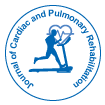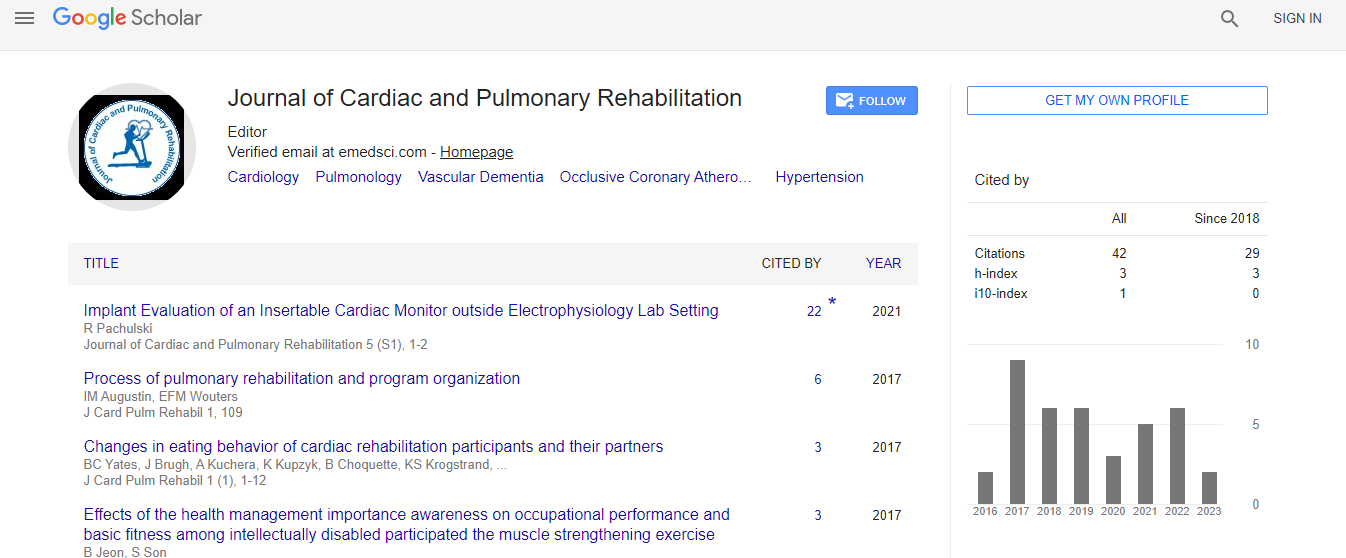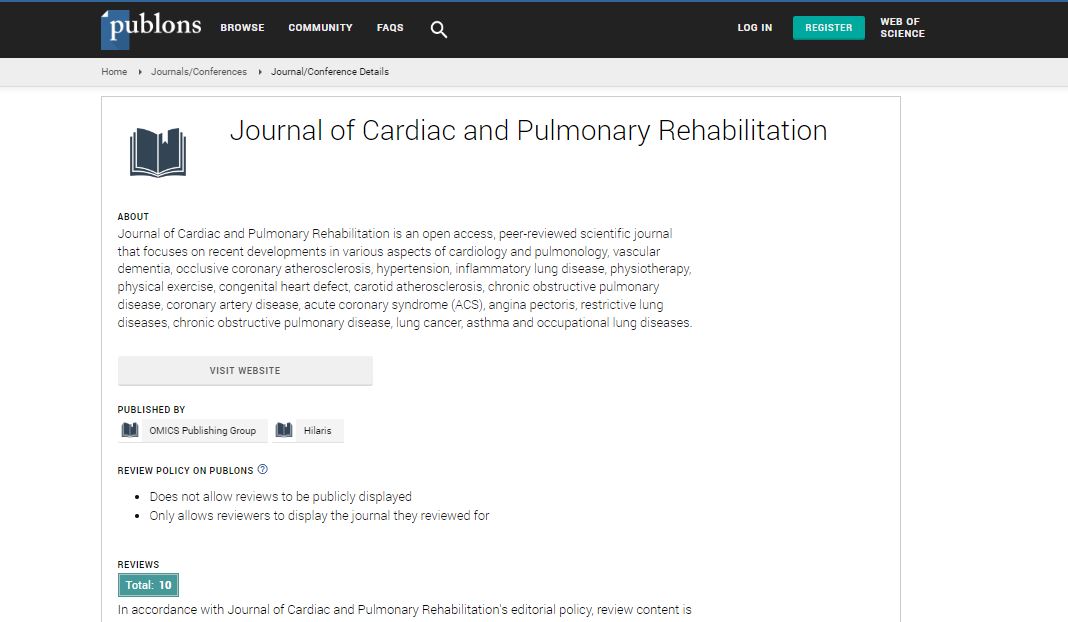The Role of Exercise Training in Cardiac Rehabilitation: Optimizing Functional Recovery after Heart Surgery
*Corresponding Author: Swati Sahoo, Un Mehta Institute of Cardiology and Research Centre, B J Medical College, India, Email: swatisahoo.ss.22@gmail.comReceived Date: Nov 05, 2024 / Published Date: Nov 29, 2024
Citation: Swati S (2024) The Role of Exercise Training in Cardiac Rehabilitation: Optimizing Functional Recovery after Heart Surgery. J Card Pulm Rehabi 8: 286.
Copyright: © 2024 Swati S. This is an open-access article distributed under the terms of the Creative Commons Attribution License, which permits unrestricted use, distribution, and reproduction in any medium, provided the original author and source are credited.
Abstract
Cardiac rehabilitation (CR) is a critical component of recovery following heart surgery, and exercise training plays a central role in optimizing functional recovery. This paper explores the importance of structured exercise regimens in improving cardiovascular health, enhancing physical fitness, and reducing the risk of future cardiac events in post-surgical patients. Evidence-based research highlights that exercise training promotes heart muscle healing, reduces symptoms of heart failure, and improves overall functional capacity. Additionally, exercise helps to manage comorbidities such as hypertension, diabetes, and obesity, which are prevalent in individuals undergoing heart surgery. This review examines the physiological mechanisms underlying exercise training in cardiac rehabilitation, the types of exercise modalities commonly used, and the optimal intensity, duration, and frequency for maximizing recovery. Recommendations for clinical practice are provided, focusing on individualized exercise prescriptions tailored to the needs and abilities of patients, ensuring safety while maximizing therapeutic benefits. The role of multidisciplinary healthcare teams in delivering comprehensive CR programs is also discussed. Ultimately, exercise training is shown to be a cornerstone of post-surgical recovery, significantly improving quality of life and long-term cardiovascular health outcomes.

 Spanish
Spanish  Chinese
Chinese  Russian
Russian  German
German  French
French  Japanese
Japanese  Portuguese
Portuguese  Hindi
Hindi 
